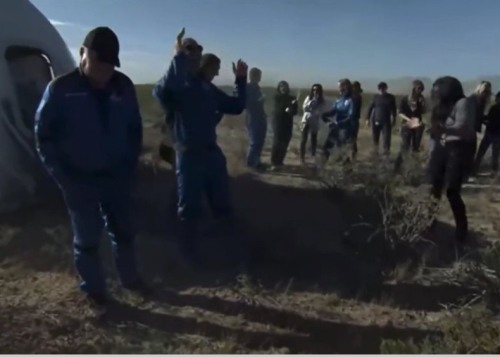China launches eleven satellites on Long March 2D rocket
China today launched eleven satellites using its Long March 2D rocket, with the primary payload a solar observation telescope, designed to observe the Sun in the hydrogen-alpha wavebands.
The hydrogen-alpha wavelength is deep red and is centered at 656.28 nanometers – for comparison, visible light runs from 400 to 700 nanometers. Observing the Sun at the hydrogen-alpha wavelength can reveal structures, evolution, and dynamic processes associated with solar flares and filaments. Hydrogen-alpha observations can also reveal solar wave phenomena, which are precursors to coronal mass ejections, and the dynamics of activity in the Sun’s lower atmosphere.
The rocket’s first stage was also equipped with grid fins similar to those used on SpaceX’s Falcon 9. Their goal at this time is simply to more precisely guide that expendable first stage back to its drop zone in the interior of China, thereby preventing it from crashing into habitable areas.
The leaders in the 2021 launch race:
35 China
23 SpaceX
17 Russia
4 Northrop Grumman
The U.S. and China are now tied at 35 successful launches in the national rankings. With three more launches expected in the next three days, one by China and two by the U.S., expect these numbers to rise quickly.
China today launched eleven satellites using its Long March 2D rocket, with the primary payload a solar observation telescope, designed to observe the Sun in the hydrogen-alpha wavebands.
The hydrogen-alpha wavelength is deep red and is centered at 656.28 nanometers – for comparison, visible light runs from 400 to 700 nanometers. Observing the Sun at the hydrogen-alpha wavelength can reveal structures, evolution, and dynamic processes associated with solar flares and filaments. Hydrogen-alpha observations can also reveal solar wave phenomena, which are precursors to coronal mass ejections, and the dynamics of activity in the Sun’s lower atmosphere.
The rocket’s first stage was also equipped with grid fins similar to those used on SpaceX’s Falcon 9. Their goal at this time is simply to more precisely guide that expendable first stage back to its drop zone in the interior of China, thereby preventing it from crashing into habitable areas.
The leaders in the 2021 launch race:
35 China
23 SpaceX
17 Russia
4 Northrop Grumman
The U.S. and China are now tied at 35 successful launches in the national rankings. With three more launches expected in the next three days, one by China and two by the U.S., expect these numbers to rise quickly.










